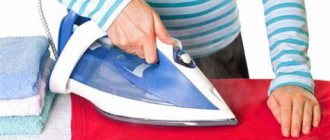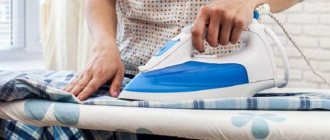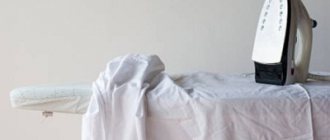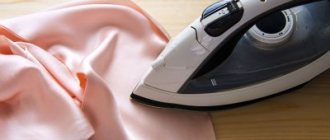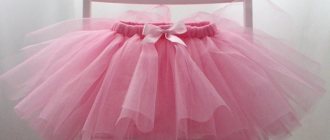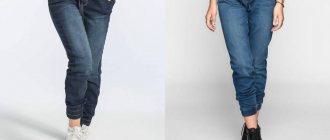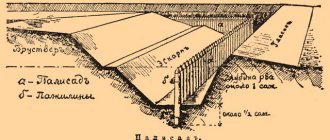Modern technology has made the ironing process much easier.
But, it is important not only to iron the fabric, but also to follow simple but useful recommendations that will save time and not cause harm to the clothes. There are many interesting secrets that, when applied in practice, can extend the life of linen and even give old wardrobe items a new shine and well-groomed look.
Basic methods
It doesn’t matter what household appliance the housewife uses for ironing, the main thing is to follow some rules and the ironing process will be significantly simplified.
To give products a neat appearance, one of the following methods is used:
- Dry. Garments are ironed from the face or back.
- Wet. Eliminating creases using this method is quite simple.
- With steam mode . The best solution for stale, heavily wrinkled wardrobe items.
Not all things can be steamed, so as not to cause harm to them. It is better to check how they react to the chosen ironing method on an inconspicuous area of the fabric.
Using a steamer
A steam generator or an iron with a vertical steam option effectively smoothes out wrinkles on synthetic material. The procedure gets rid of creases, dirt, pathogenic microorganisms, unpleasant and ingrained odors.
The steaming procedure contains several simple steps:
- Straighten the product and place it vertically on a hanger (on a hanger).
- Select the “delicate” option on the device.
- Start the impact from the back, moving from top to bottom.
- Then steam the shoulders, sleeves, then the outer part. The collar is processed last. The steamer must be kept at least 5 cm away from the fabric.
If you don’t have a steam generator or steaming function on your iron, you can use a handy method. It is quite effective, harmless and even beneficial to the tissue.
To remove wrinkles from a polyester product, you need to:
- Straighten the item by placing it on hangers in the bathroom. Buttons and zippers must be fastened.
- Run hot water and close the door to the room. The bathroom should be filled with thick steam, which will straighten the fabric and remove creases.
Then the product is transferred to another room and left to dry.
Preparing laundry: at what temperature and in what mode should you iron?
It will only take 10-15 minutes to prepare, but it will save more effort and time. First you need to carefully read the information on the tag. It indicates the possibility of using steam and temperature.
Below you can see the ironing icons :
- Ironing and steaming of products is permitted.
- Recommended mode 110℃.
- It is allowed to use medium mode up to 150℃.
- It is acceptable to use an iron heated to 200℃.
- Do not steam, take it to dry cleaning.
- Do not iron.
For clarity, the icons are shown in the photo below:
If there is no label, then you need to choose a mode depending on the composition of the fabric:
- flax – 190-230℃;
- cotton products – 165-190℃;
- woolen items – minimum temperature – 140, maximum – 165℃;
- pure silk – 115-140℃;
- items made of viscose – from 85 to 115℃.
If the laundry is wet and the iron is not hot enough, yellow spots will appear on it. You should also not allow the fabric to become too dry; ironing it is very difficult. The material should be slightly damp.
How to iron clothes correctly?
Sort clothes into separate piles depending on the recommended temperature ℃. This is necessary so as not to constantly switch the thermostat. The soleplate of the iron should be clean, as should the steam chamber.
Simple instructions for ironing clothes:
It is better to pass clothes from the inside out.- When ironing from the face, it is better to use gauze or cotton cloth soaked in water.
- Plain water is suitable for hydration.
- Clothes are laid out carefully so that there are no folds or creases.
- The light should fall from the left side - for a right-handed person.
- It is better to carefully fold sheets and duvet covers into 4 folds to avoid distortions and iron them away from the face.
- The iron is moved away from you, this will prevent burns.
- To prevent the seams from being imprinted on the face, it is better to place thin cardboard between them; the same applies to pockets.
- Iron clothes along the main line, even if the item is cut on the bias.
- Products are smoothed from top to bottom to avoid deformation.
- First, small parts of clothing are processed.
- Thick areas are carefully ironed through gauze.
- If there is lint, iron it in its direction.
Eliminating ironing errors
If creases occur during ironing, then you need to mix water and vinegar in equal proportions, soak gauze in this solution, squeeze it out and place it on the problem area of the item. Then they pass here several times with a heated iron.
If scorch marks occur during ironing, then on light-colored fabrics they can be removed with a mixture of hydrogen peroxide and salt, and in this case linen items are soaked in sour milk and then washed.
A paste of soda will help to cope with this problem on silk, and on thicker fabrics a solution of lemon juice and sugar or onion juice will help. After exposure to these substances, the products are washed, then dried and ironed.
Features for different types of fabrics
Before ironing the product, you should carefully study the information on the tag. If it is not there, then you can use simple rules for caring for certain types of fabrics:
Viscose. You need to pass the iron over the material from the wrong side.
Before work, carefully straighten the clothes to avoid wrinkles. Do not leave the iron on an uneven surface, as this may damage the material. It is recommended to iron through damp gauze or cotton cloth.- Linen and cotton .
Products are ironed from the inside out. It is better to wrap linen or cotton clothes in a wet cloth and leave for half an hour. Treat the surface through gauze. It is better to use the steam function without overheating the iron to a temperature above 200 °C. For thin 100% cotton, a temperature of 160-180 °C is suitable. - Fatin. The main thing is that the product must be washed correctly, the recommended spin is 500 rpm. It is difficult to iron a thing with a simple iron. A dense material is placed under the fabric, with cotton fabric or gauze on top. Choose the minimum t °C, otherwise the clothes will turn yellow. You can use the steam function, which straightens the item without deforming it.
- Velvet and corduroy products . In the second case, steam is used. Velvet items are ironed from the inside out through cotton fabric. It is better to place a terry towel of small thickness on the ironing board. This preserves the appearance of the clothes. Iron corduroy and velvet at low temperature.
- Jack. First, iron the item off your face. There should be no creases on the reverse side. It is very difficult to eliminate them. Fold the product in half, facing inward. Treat on one side, then on the other at a temperature of t °C 200-210.
- Synthetics. Practical, popular fabric. You can iron such products by following the recommendations indicated on the label: ironing and washing mode. Most often, low or medium temperature is used. Products are processed from the inside out through gauze or cotton fabric.
- Veil. Before you start working, it is better to apply gauze to your clothes. Without cotton fabric, ironing the product should not be done. It is also impossible to linger in one place - you can damage the material. The iron must be moved quickly and carefully. Steam use is also not recommended.
Knitwear. Knitted items may become deformed after washing.
Iron from the inside out, the fabric should be damp. It is better to move the device carefully over the material. Ironed clothes should be left on the ironing board to cool and dry thoroughly.- Capron. You can iron it, but only at a low temperature of 110°C. If your device doesn't have a gentle mode, it won't work. Align the nylon well on the board, put cotton fabric on top. The more delicate the item, the thicker the padding should be. The steam function cannot be used.
- Satin. It is recommended to treat the product from the face. Set the mode to 200°C. For effective ironing, you can use a steamer. But the fabric itself needs to be dried well. Wet material will stretch and deform. Additional fabric pads, gauze is not used.
- Atlas. Products quickly wrinkle and become deformed. They should be a little damp. Temperature range 140-150°C. The regulator should be set to “silk” mode. It is better to treat the surface from the inside out through cotton fabric. Move the device quickly, without holding it in one position, otherwise the structure of the fibers will be disrupted.
- Tulle. Recommended temperature 120°C. Most curtains can be steamed. If there is no such function, place a damp cloth on the ironer. Read more here.
- Organza. Place gauze under the material. Set the minimum temperature. You can use the steam function. You can find detailed information here.
- Polyester. Iron from the inside out through moistened gauze. If the item remains wrinkled on the front side, you will have to go over it too. Temperature 120-130°C. Read more here.
Leatherette. When ironing, the areas should not touch.
It is better to place a roller in the sleeve. Treat the surface from the wrong side through gauze. The temperature is minimal, steam cannot be used. Read more here.- Leather. Temperature range 110-140°C. First straighten the product well. Read more here.
- Silk. Select a mode with the same name. Place moistened gauze on the front side (if the product is completely dry). The steam mode cannot be turned on. Read more here.
Not all linen and cotton fabrics are natural .
Manufacturers often add synthetic fibers, which reduce the cost of products; they are ironed at lower temperatures and wrinkle less. To avoid damaging your clothing, you should read the fabric composition on the label.
Disadvantages of ironing
But the benefits of ironing are not so simple. Some sets of bed linen cannot be ironed, and some housewives deliberately refuse this process, arguing their position with the following facts:
- In the modern world, heat treatment with an iron for the purpose of disinfection is a useless process, since a washing machine performs a similar function when choosing a program for cotton fabrics. It is much more effective to spend this time communicating with your family.
- When standing at an ironing board, you have to take uncomfortable positions for a long time, which negatively affects your health. As a result, joints and spine begin to ache.
- After using the iron, the fibers of natural fabrics are smoothed and sealed. As a result, they do not absorb sweat well, which is especially important in the summer months.
- If it's hot at home because of the weather outside, then working with an iron can turn into real torture.
- The iron is a high consumption electrical appliance. Working with it entails additional financial costs. You will also need money to buy a comfortable ironing board and regularly update its cover.
- The impeccable smoothness of the fabric and the absence of wrinkles disappear after the first night.
- Fabric can accumulate static electricity. Its presence has a detrimental effect on the quality of sleep.
- Using air conditioner and ironing are incompatible. One of them will need to be abandoned.
- You can eliminate the need to use an iron by using the washing machine's "easy iron" function. All you need to do is hang your wet laundry carefully.
- If polyester threads are added to the fabric, they will melt at high temperatures and the appearance of the set will be greatly damaged.
Do you iron your bed linen?
Not really
The purpose of gauze, why and when is it recommended to be used?
Thin cotton fabric is the best way to protect shiny and delicate products. It is recommended to use gauze for ironing dark clothes that show streaks after ironing.
There are very thin materials that are susceptible to high temperatures. On some device models, the minimum mode is 100°C, and for chiffon only 60°C is suitable. This is where gauze will come to the rescue and serve as a barrier.
A few tips on how to properly use cotton fabric:
- If the item has dried, it is recommended to pre-moisten the cushioning material.
- It is good to steam the folds through gauze.
- To give clothes a bright color, gauze fabric can be slightly soaked in vinegar.
Before moving on to another piece of clothing, you should check how the material has been ironed under the cotton fabric.
Is it possible to iron without an iron?
You can make things look well-groomed in different ways. Even a high-quality iron can fail at the most crucial moment, so it is important to know alternative methods on how to iron things without an iron:
a bathtub filled with hot water;- moistened terry towels: lay clothes on one, straighten, cover with the other;
- boiling kettle: the item is ironed with steam;
- vinegar and water: spray the product well;
- hair dryer: clothes are moistened, smoothed, then dried;
- An iron is an ideal tool for ironing collars.
The ironing cabinet can handle any material. It will help get rid of even large creases, stretch the product after washing, and create creases in trousers. Such devices allow you to iron curtains and outerwear while hanging, eliminating the appearance of wrinkles.
Advantages of ironing
Proponents of ironing bed linen support their position with the following facts:
- After heat treatment, the fabric becomes softer and more pleasant to sleep on. The iron can soften even natural cotton and linen, which become hard after washing.
- The linen takes on an aesthetically pleasing appearance and is completely free of folds and creases.
- Since the main material for sewing bed linen is natural fabrics, such a finished product wrinkles more easily in the washing machine. The only way to get rid of wrinkles is to use an iron.
- Using high temperatures is one of the methods of disinfection. This treatment is used when there is an infectious family member or small child.
- High temperatures cause less abrasion and fiber splitting, which means less wear and tear on bed linen. However, this rule does not apply to all types of fabrics.
Reference! One of the main arguments in favor of ironing is the high cost of a high-quality set and the reduction in costs for its regular updating. It is better to buy good quality underwear and take good care of it than to change a cheap set every few months.
Secrets for different wardrobe items
Not all clothing items are cared for equally . Each thing requires a separate approach. To get the maximum effect from your work, you need to follow simple rules.
| Wardrobe item | Some useful tips |
| Trousers | From the wrong side, iron folds, pockets, seams. Turn the trousers inside out and iron the top, waistband, inside, then outside. |
| Jeans | Most often, such products are simply straightened after washing to maintain their original appearance. If you need to go through the iron, you need to do it from the inside out. |
| Coat | Such wardrobe items cannot be ironed. They need to be steamed by weight. |
| Cloak | The processing method depends on the fabric. The raincoat is ironed from the inside and then from the outside. |
| Blazer | Iron the lining on the sleeves, then the sleeves themselves using a special board. Next is the back, floors, collar, lining and sides of the product. |
| Kids' things | Iron from the inside at maximum temperature. |
| Skirts | First iron the back side, then the face. Pull the lining out, iron the panels as usual using cotton fabric. |
| Shirts | You need to start with the sleeves. The cuffs are ironed from the inside, then the collar, the top of the back, and the front of the product. |
| Bed dress | Fold the product 4 times. The fabric should be damp. The temperature depends on the material. |
| Jacket | Turn inside out, select “silk” mode. To avoid damaging the fabric, use gauze. |
| Curtains and drapes | Products are ironed wet at a temperature of 110-130 degrees. Quick, careful movements. |
| Cap | Moisten the baseball cap and put it on the frame. Straighten the fabric well. Leave until completely dry. |
| T-shirts | Iron small parts after the sleeve to create arrows on the bend. Iron the back and shelves. |
| Paper | Lay out well, cover with a cloth, select the minimum temperature. During the ironing process, gradually increase it. |
Here are simple tips for caring for things that will help you maintain the original appearance of your clothes and always look respectable.
Comfortable conditions are not luxury
Ironing is not hard work. Nevertheless, many housewives do not like it, putting it off for later and collecting whole piles of unironed linen. To eliminate unpleasant emotions, first of all, you should properly organize your workspace and process.
Workplace requirements and useful organization tips:
- The height of the ironing surface must correspond to the height of the person. Modern ironing boards have multi-stage or smooth height adjustment, allowing you to set the device to a comfortable level. For comfortable conditions, the working surface should be 10–15 cm below the elbow. Deviation from these parameters in any direction will lead to rapid fatigue during work and general discomfort.
It is not necessary to iron things while standing. Many housewives successfully handle ironing while sitting on a chair or sofa. You just need to adjust the height of the working surface for this position.
The height of the working surface is calculated taking into account the distance from the floor to the person’s elbow - The entire work surface should be well lit. If you are using a portable board model, it is better to place it near a window during the daytime. Natural light is better for the eyes and does not cause irritation.
- Stationary models of ironing boards, including folding and retractable ones, are more convenient to use - they do not require transportation from storage to the work area, and this significantly saves effort during frequent ironing work.
- When arranging your work area, think through the details: how convenient is the location of the outlet, where to put the iron, where to put ironed items. It’s good if the ironing board has a built-in socket and is connected to the mains without an extension cord, and for the iron and linen there is a special stand and shelves located nearby.
- In addition, the work surface must be stable. If the ironing board becomes very loose during use, tighten the bolts at the fastening points. Otherwise, ironing will not only be inconvenient, but also unsafe.
- A cover on the work surface is of great importance. It should be soft and well secured. If, when the iron moves, the cover moves along with the fabric, this greatly slows down the work and causes inconvenience.
- Many women note that they get tired of ironing due to the monotony of the process. This problem can be easily corrected by turning on pleasant music or an audio recording with interesting information.
From the secrets of folk wisdom: if you don’t like ironing, place the ironing board in front of the TV while watching your favorite TV series. You yourself will not notice how a mountain of crumpled linen will miraculously turn into a neat stack of ironed things.
- Another pressing problem is the catastrophic lack of time for ironing. You can speed up the ironing process by using a useful life hack. Remove the cover from the ironing board and cover the work surface with food foil. Then carefully place the cover over the foil and begin ironing. Foil perfectly reflects heat, and the laundry will be ironed much faster, and on both sides at once.
- If there is still not enough time for ironing, and a woman, not having time to iron large amounts of laundry, realizes that she is a bad housewife, this can lead to psychological problems and aggravate the situation. In this case, psychologists advise finding a reasonable compromise and making it a rule. Based on your capabilities, select the most important things that must be ironed. Immediately after washing and drying, carefully place the rest of the laundry in the closet, without using heat treatment.
Video: useful tips for saving effort and time
How much does home service cost?
A popular service that allows you to give your product a well-groomed, pleasant look. Ironing is performed using special equipment that acts delicately on the material, eliminating unevenness and creases.
Specialists work individually:
- the degree of wear and structure of the material are assessed;
- the manufacturer's care advice is taken into account;
- the optimal temperature is selected.
The cost of professional ironing depends on the size, number of items, and type of material. The average price is 1700-2000 rubles.
Useful tips and advice
A few simple recommendations:
- The surface of the equipment must be clean.
- Only boiled water should be poured into the tank.
- It is better to purchase a large ironing iron.
- Before work, you should prepare hangers to hang clothes on.
- Treat stains remaining after ironing with peroxide.
- Glimpses can be removed with a simple wet cloth.
- Items that are not dry cannot be ironed; they will remain stained.
The iron should not be placed on the edge of the board. Do not check the heating level of the device with your finger. The cord should be put away so that it does not interfere with work.
